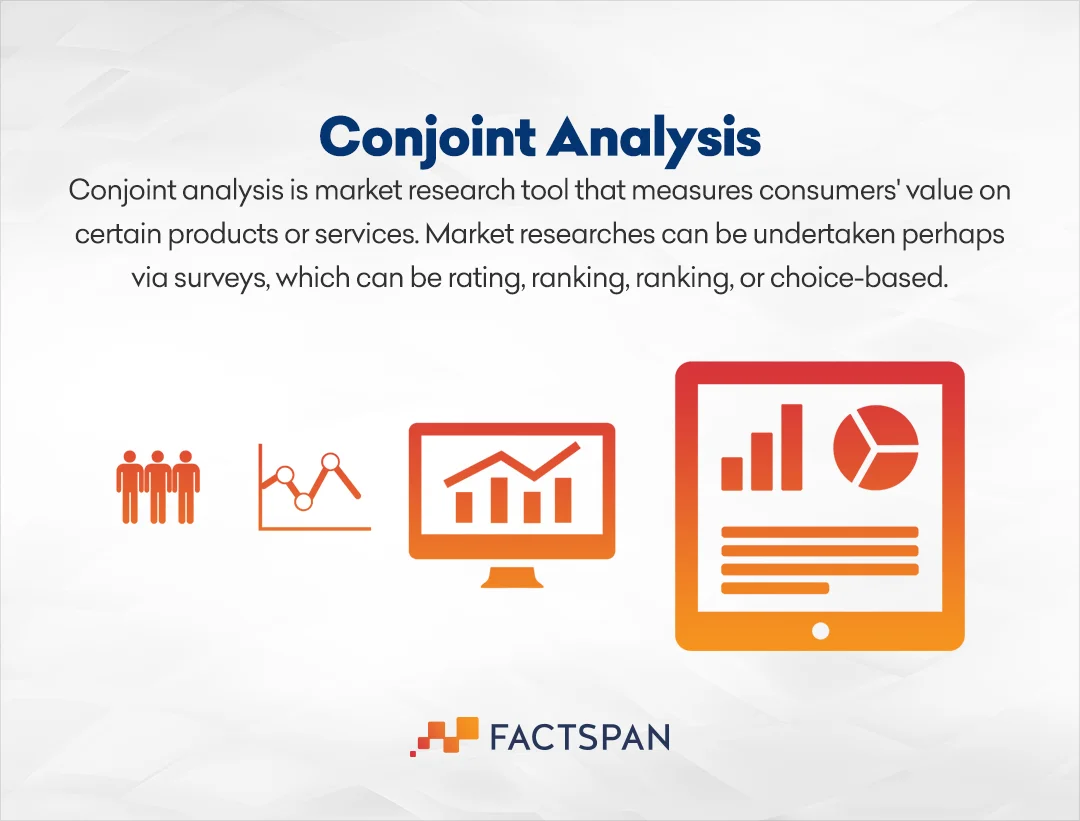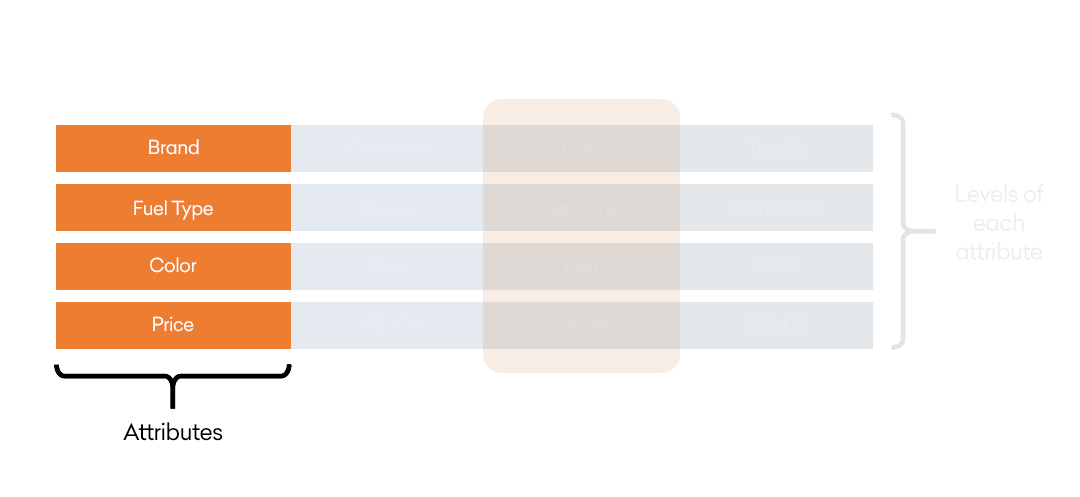Consumers today have an overwhelming number of options regardless of the business. Most shoppers experience “choice paralysis” when presented with so many options; this condition occurs when there are more options than we can reasonably process.
As a result, it is harder than ever for a product owner to assess the target market’s preferences. For instance, if you are selling a laptop, you should be able to respond to the screen size, the battery life, or the sort of display your audience prefers. Alternatively, they favor pricing over features. The biggest challenge facing business owners is figuring out how to better understand consumer preferences.
Customer choice is the priority, and this should be the motive of every business. But how do we sort every customer’s choice? In this article, we will learn about Conjoint Analysis and how it helps businesses to categorize their product or service according to the customer’s choice.
What is Conjoint Analysis?
Conjoint Analysis is a comprehensive approach to market research analysis that makes it simple for organizations to comprehend what their customers prefer. People regularly change their preferences for any good or service, even if we are not aware of it. What kind of washer or detergent does the customer choose to maintain in their home, and what kind of after-wash do they require? To arrive at a decision, all of this requires thought and consideration.

The same is true for service providers as well as product sellers. What types of services are needed, and what has to be sorted? It’s crucial to adjust how your service is delivered in accordance with this. Any corporation can arrange features and requirements in accordance with client preferences for any product or service by using the conjoint analysis.
Actionable Ways to Conduct Conjoint Analysis
The conjoint analysis adds value to each element of any good or service, assisting companies in identifying the kind of customers they are seeking. At Factspan, we use the below-mentioned three steps to conduct an effective conjoint analysis.
- Breaking Down Into Relevant Attributes and Levels
As a starting point, categorize a product based on customer preferences such as brand, dimensions, cost, or features. For example, a conjoint study on cars will look like this –

- Estimating Demand Curves and Elasticities
More realistically, conjoint analysis asks each respondent to select between various product concepts (or alternatives) created through the combination of attributes and levels, going beyond merely asking respondents what they like about a product or what features they find most significant.
These combinations are put together into choice sets with care (or questions) 8–12 questions are typically asked of each respondent. Experimental design is the process of combining characteristics and levels into product conceptions and then decision sets, and it necessitates considerable statistical and mathematical analysis.
- Designing Products for Market Segments
After going through all of this, the decision-maker chooses the method to organize, process, and analyze data in order to draw conclusions that are useful for designing any model or process.
Best Use Cases
Apart from segmenting and understanding your customer preferences, Conjoint analysis has a variety of applications.
- Price Research – When a company understands how its customers value its products or services’ features, it can use the information to develop its pricing strategy.
- Product Repositioning – The findings of conjoint analysis help marketers in designing new products and positioning teeth-whitening products based on desirable attributes.
- Brand Equity – Conjoint analysis enables your company to determine which qualities of a product or service clients prefer over others, allowing you to make better-educated choices regarding pricing, product development, and sales and marketing initiatives.
- Market Segmentation – It is a tool used by marketers to determine how suggested actions will affect the market and how consumers will weigh various products and suppliers.
- Line Extension – The acceptance of additional features by customers is a key factor in determining whether a line extension will be profitable. Conjoint analysis can look at how consumers’ behavioral preferences affect how they rate the initial items and line extensions.
There are also several other applications that are used in the sector, such as litigation, capital budgeting, patient/physician communication, and transportation planning.
Conclusion
Conjoint analysis has always made it easier for businesses to make the best choices possible when designing their products and services to appeal to client preferences. It has many advantages for a business. To provide them with products and services, businesses must have the best possible understanding of their customers. In order to establish your position in the market, you can efficiently segment your customer base based on survey data and distinguish between actual and perceived preferences.
By asking people to explicitly evaluate many features to see how they value each one, conjoint analysis also enables you to measure price sensitivity, compute attribute interactions, and preserve brand equity. This makes it simple to engage with your target audience through tailored marketing initiatives that produce greater outcomes.
